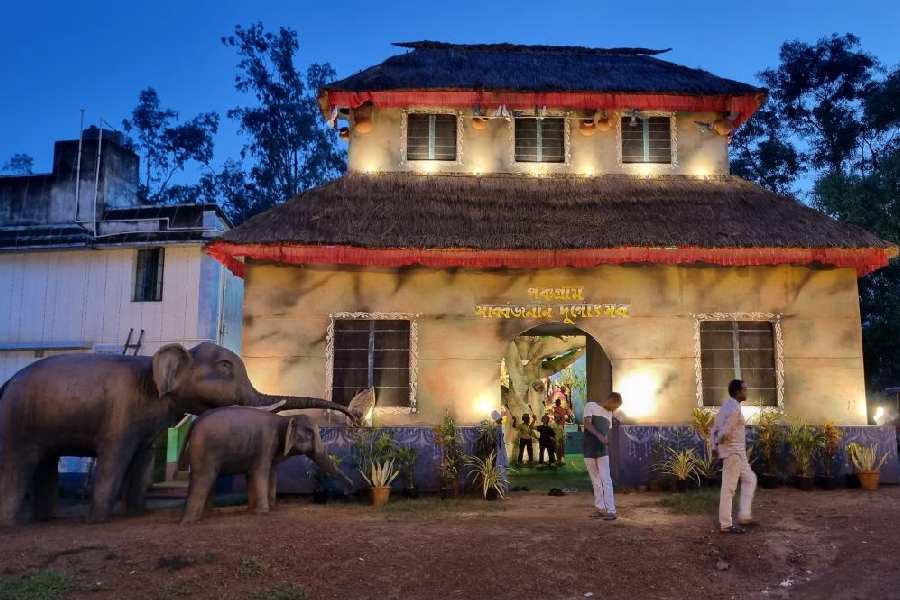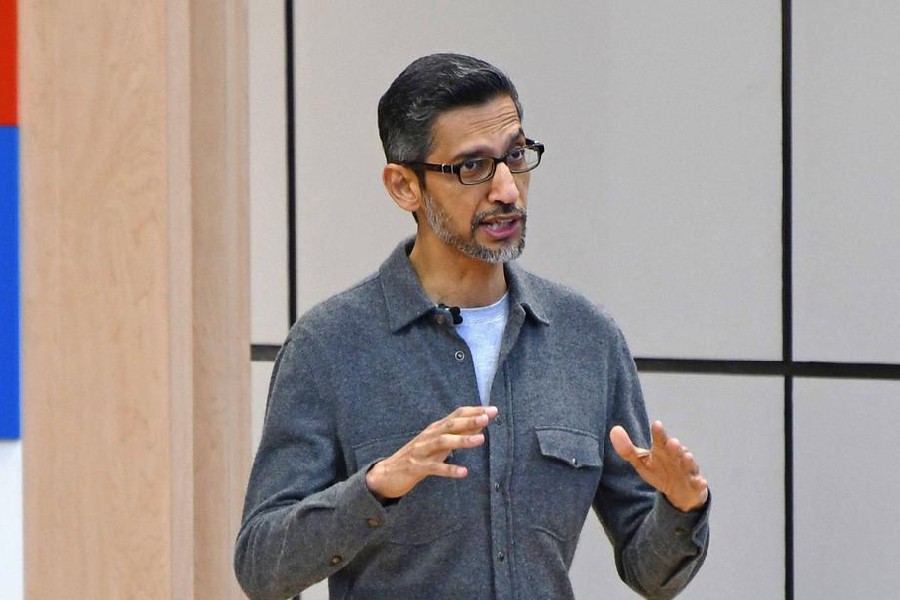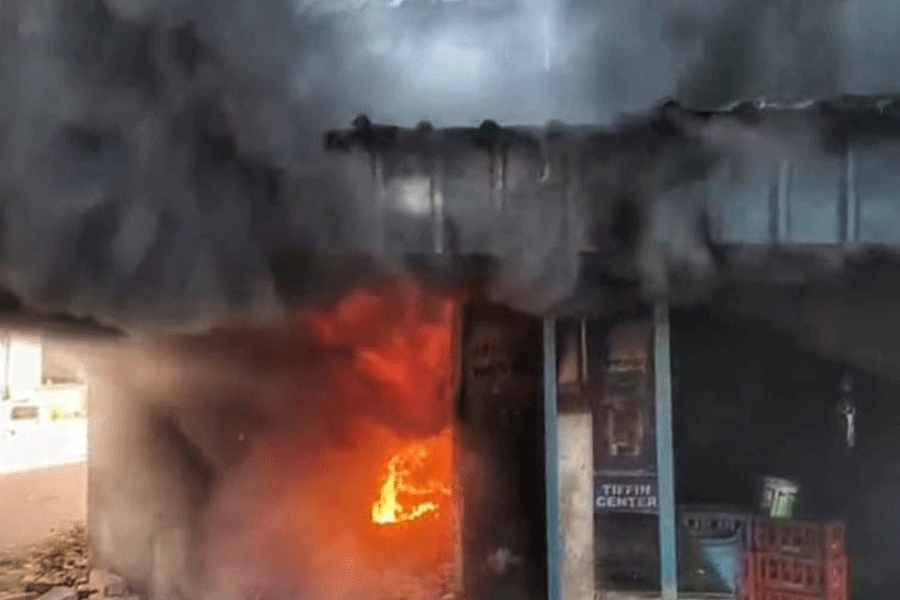The area is an elephant habitat. Throughout the year, elephants remain stationed near several villages. The pachyderms raid houses, drag away harvested crops, damage crops on the fields, and sometimes even cause loss of human lives.
A Durga Puja committee comprising residents of five Jhargram villages this year chose to depict the story of survival amid human-elephant conflict as the theme of their puja.
The Panchogram Sarbojanin Durgotsav Committee in Gadro village of Salbani gram panchayat, beside the Jhargram-Lodhasuli state highway, has set up a pandal on the theme “Orao banchuk, amrao banchi” (Let them live, so we may live too).
The name of the Puja committee itself carries meaning. Here, Ora (they) means the elephant, and Amra (we) means the humans.
Since the puja is jointly organised by five villages — Gadro, Peniabhanga, Ghritkham, Baghmuri, and Aowligeria — it is called Panchgram Sarbojanin Durga Puja. These villages in the Lodhasuli range of the Jhargram division are severely elephant-affected.
Elephants regularly move through these areas, staying most of the year, which results in crop damage, destruction of houses, and even loss of life. Several people have died in elephant attacks.
According to forest department sources, in the financial years 2022–23 and 2023–24, a total of 26 and 17 people, respectively, were killed in human-elephant conflicts in Jhargram. In 2024–25, the number dropped to six.
The main pandal was built like a two-storey mud house, a common sight in rural Bengal, particularly in Jungle Mahal areas. A visitor will find a mother elephant with her calf dragging a sack of paddy from a window. Inside the pandal, scenes show how poor farmers work hard to produce paddy and vegetables while groups of elephants destroy the crops.
However, the elephants were not portrayed only as villains against humans. The pandal also highlighted how pachyderms fall prey to human attacks. One theme zone shows a group of villagers chasing an elephant with flaming mashals (torches) to hurt it.
Local artisan Shilpi Santu Mahato of Jamdahari village in Jamboni made the elephant calf, mother elephant, and the pandal using bamboo, rope, paper, and glue.
"We tried to display what we face every day. Living with elephants and struggling against their raids, sometimes we even lose loved ones. At the same time, we also showed how some among us become cruel towards the elephants," said Shailesh Mahato, secretary of the Puja committee.
"Here, all of us are farmers or farm labourers. For the past few years, our livelihood has been under threat because of the human-elephant conflict. We want a permanent solution for the elephants," he added.
During the festival, the forest department is on alert to prevent any problems in forest-adjacent areas. Many pujas are held in the rural parts of Jhargram and the Lodhasuli range. People from towns often visit these rural pujas, while villagers go to towns to see the celebrations. There is a high probability of facing an elephant attack during the festive season. For this reason, the forest department is maintaining vigilance to avoid any accidents during the Puja.
The forest department recently held a high-level meeting and assigned special duties during the festival, as people are usually in a festive mood and roam about freely. Foresters have issued multiple instructions and deployed staff during peak hours when people visit or return from pandals.
"We have already issued multiple instructions to different forest districts to remain alert during the Puja days. Our special teams will be on the ground to ensure that no untoward incident relating to human-animal conflict takes place," said S. Kulandaivel, chief conservator of forests (CCF), western circle.











